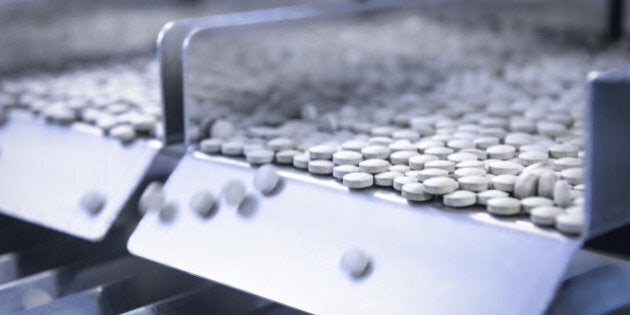
Every year in Canada, pharmacists dispense more than 450 million prescriptions -- an average of roughly 14 per Canadian. And according to Health Canada, nearly 45 per cent of those prescriptions are filled with generic drugs, which are bioequivalent to the brand name pharmaceutical.
Chances are, if you've filled a prescription, you've received a generic drug at some point -- unless you're one of the more than 100,000 Canadians using a special class of drugs known as biologics.
Biologics are used to treat autoimmune diseases such as rheumatoid arthritis, psoriasis, irritable bowel disease (IBD) and cancer, and they have revolutionized care for these illnesses. They are derived from living organisms and as a result are more complex to manufacture compared to chemically synthesized drugs. As a result, no generic forms exist.
What does exist -- and what in our opinion might be confusing for patients as patents expire for established biologic drugs -- are newer treatments now entering the Canadian marketplace called Subsequent Entry Biologics (SEBs, or biosimilars).
Unlike generic drugs, SEBs are biologic products that are similar to, but not considered by Health Canada to be bioequivalent to, or therapeutically equivalent to, the approved original biologic drug. Most medicines are small molecule chemical compounds that are relatively simple to produce and copy (like following a recipe) -- so generic drugs are typically interchangeable. Biologics, on the other hand, are large molecule medicines that are so intricate that manufacturers develop them using unique, biological processes. It is simply impossible to exactly reproduce biologics.
Think of SEBs versus biologics like leaves growing on a tree. Access to sunlight and water and even the leaves' position on the tree can affect their growth and colour. Differences in the manufacturing process between an SEB and a biologic can significantly impact the final product too. These differences might not be obvious, but they could ultimately impact the structure, and possibly the function, of the medicine's active ingredient. That's why Health Canada doesn't consider SEBs equivalent, or interchangeable, to the original biologic and may not even approve them for treating the same condition.
Ultimately, patients need to understand that while SEBs may offer alternative therapeutic options, they are not the generic form of the biologic. They are similar, but not the same.
New treatments come on and off the market all the time, and that's important as healthcare continues to evolve. But it's vital that patients remain aware of their options and know the differences between the original biologics and SEBs so that they can engage in informed conversations with their healthcare providers and, for accurate post-market safety surveillance, double check that their pharmacists are dispensing the exact medication prescribed.
For more information on SEBs, please visit the Canadian Arthritis Patient Alliances' website.
This blog post was supported by Janssen Inc.